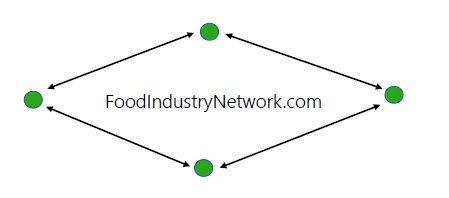Investors and farmers are worlds apart

The insular nature of Canadian agriculture is one of its biggest innovation challenges, said speakers at a recent ag event.
Read Also

New side-tipper design helps reduce fruit, vegetable contamination
Keeping the fruit and vegetables you harvest in the same condition you found them in the field can be a…
Growth will thrive when connections are made, collaborations are struck, and investors are found to put up the dollars needed to take a concept and make it reality, but there’s not enough of any of those things, according to speakers at Bioenterprise’s National Call to Action in Ottawa Nov. 25.
The event followed a national round table series designed to present policy recommendations for improved agri-food and agri-tech innovations and investments in Canada.
Why it matters: To achieve greater output and lower inputs, agri-technology is necessary to keep Canadian farmers in the game.
Bioenterprise CEO Dave Smardon and innovation director Michael McGee spoke about barriers to ag innovation, and provided recommendations for future implementation and adoption. They flagged issues largely related to a lack of understanding about agriculture by those who hold the purse strings.
Smardon said few investors understand agriculture and agri-food so they stick with more familiar sectors.
“Traditionally, angel investors and family offices invest in what they know, so if you make your money in pharmaceuticals, you’re probably going to invest in pharmaceuticals.”
McGee said slow returns often prevent investors from prioritizing agriculture.
“The average exit in Canada is eight years,” he said “Agriculture is much longer. So, if we’re going to look at getting more folks to invest in agriculture, they’re going to have to realize that the time to build the business in ag or food is going to take much longer.”
He suggested changing the way return on investment is pitched to investors.
“We have to do a better job for folks that are looking from the outside in at the potential, looking at agriculture, not only for return on investment, but for the societal impact of safety and food supply, better nutrition for better health outcomes, regenerative ag, reducing impact on environment.
“They have to understand what the risks are, and ultimately, maybe a little more modest expectation on the return side.”
Smardon mentioned the need for connection between producers interested in innovation and investors who don’t know how to access the farming community.
“What we need is some way of bringing these communities together, whether that is through a single organization, or whether it is through some sort of policy or network that … is responsible for making those connections.”
Other recommendations dealt with government-related complex regulations and a general lack of coordination.
McGee said concerns over regulatory challenges are raised in every region of the country and different provincial and territorial policies are difficult to coordinate. A more focused approach from governments would help.
“We are never going to get rid of the fact that every province is going to have a separate agenda. And that’s fine because agriculture is so diverse, but if there’s some way of coordinating the activity so that the entrepreneurs across the country aren’t in a disadvantaged situation … I think that’s a major step forward,” said Smardon.
Coordination on tax credits for investors would also be an asset.
“There are tax credits across the country in various provinces, but there is no national program,” Smardon said. “I think of the inequities that exist across the country, that something is in place in one jurisdiction, but not in another. And how do we level the playing field?
“Having some sort of a program … a national tax credit, would be really helpful.”
Source: Farmtario.com

